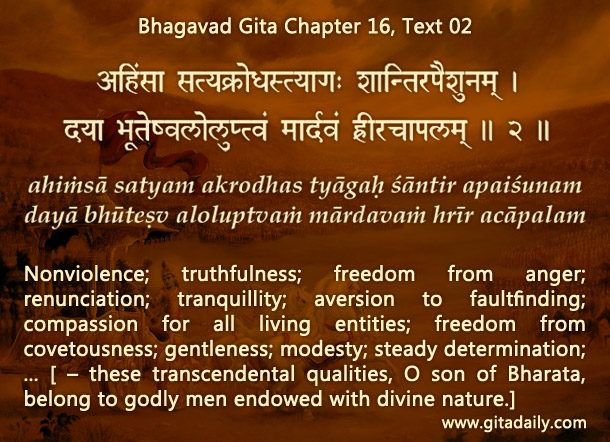Some people feel alarmed by the Bhagavad-gita’s battlefield setting, especially in today’s world where many rationalize brutal violence against the innocent in the name of religion.
However, they let the Gita’s setting blind themselves to its substance. In its entire text, the Gita doesn’t contain any glamorization of war, it doesn’t contain praise of any war strategy; it doesn’t at all spew hatred against anyone. Quite to the contrary, the Gita contains many appreciations of nonviolence as a laudable virtue. For example, the Gita (16.02) lists nonviolence as a prominent quality of the godly.
How does a book with a battlefield setting praise nonviolence? Because the Gita’s message goes far beyond violence and nonviolence to dharma, the right course of action for harmonizing ourselves with our own nature and with the innate order within the cosmos. Arjuna’s question that starts the Gita (02.07) is not whether he should fight or not, but what his dharma is.
The point of the Gita is not that Arjuna has to fight a war – the point is that he has to do his dharma, his duty. And at that particular time, Arjuna’s duty was to fight a war. The essential point for him and for all of us is that we need to stick to our dharma, no matter how difficult such adherence may seem and no matter how alluring abandoning it may seem.
And this universal message of seeking the right course of action has made the Gita relevant for millennia for people who have no knowledge of its specific battlefield setting.
Casting the Gita as an exhortation to war is a grievous misrepresentation that deprives us of its timeless wisdom. In contrast, comprehending it as an exposition of dharma helps us empower ourselves with its illuminating insights.
To know more about this verse, please click on the image
Explanation of article:
Podcast:


Leave A Comment